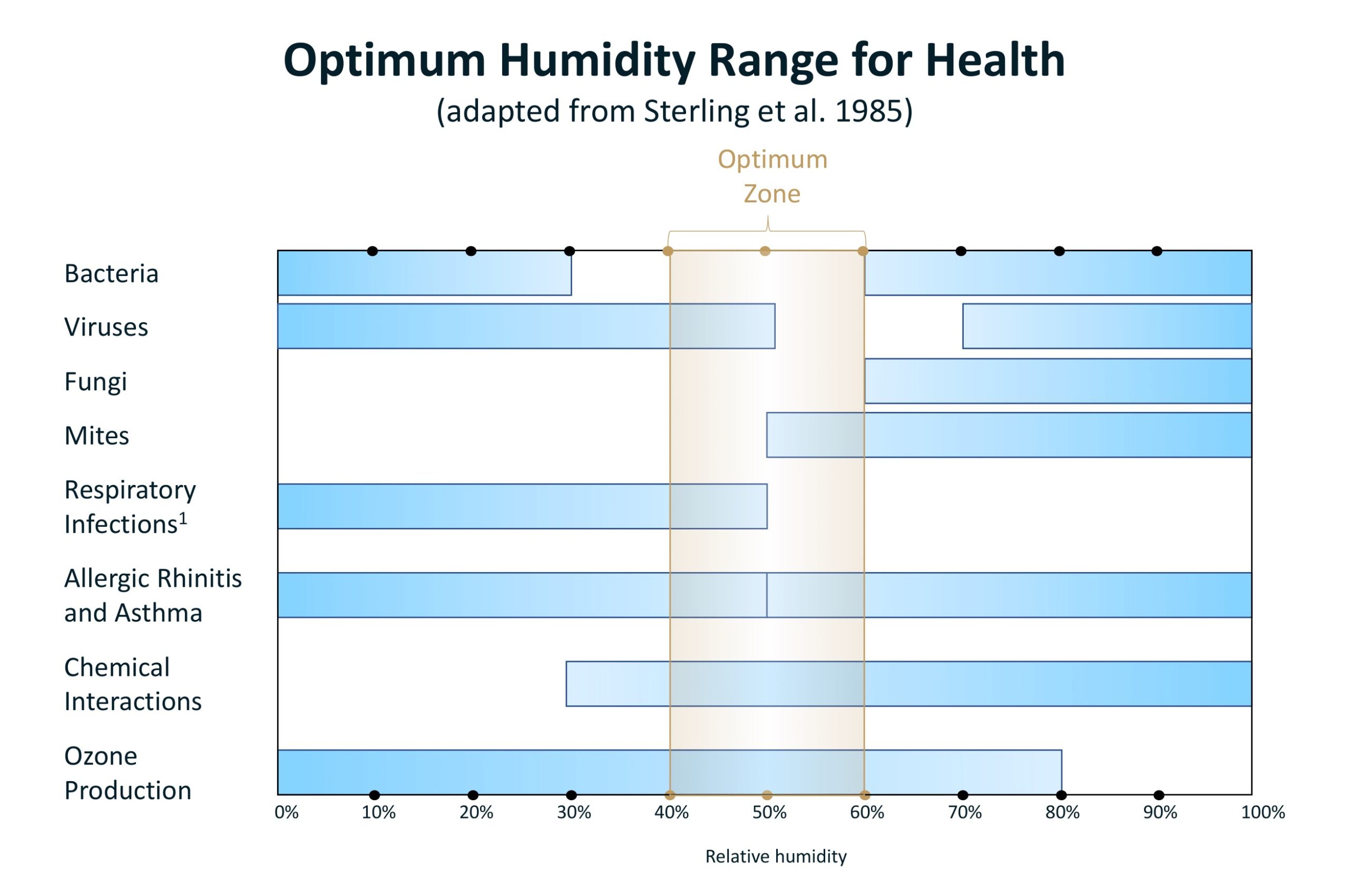What Is Relative Humidity and Why Is It Important?

An intuitive presentation
Relative humidity is a measure of absolute humidity in relation to something else. The understanding of this "something else" naturally brings to light the interest of measuring relative humidity, allowing to better understand its behavior and therefore, to better control it.
Absolute humidity is the amount of water vapor in the composition of air. Air is a combination of many gases (nitrogen, oxygen, argon, carbon dioxide, water vapour, etc.) and the more water vapour there is in this combination, the higher the absolute humidity.
Now the question is: Is there a limit to how much water vapor can contribute to the composition of air? Could air be 95% water vapor, with the remaining 5% filled with oxygen, nitrogen, and other gases necessary for life? To ask the question is to answer it. There is a limit to which air can incorporate water vapor, and it is against this upper limit that relative humidity is calculated.
Relative humidity is the ratio of the actual amount of water vapor in the air (absolute humidity) to the “maximum amount of water vapor the air can hold” under the same environmental conditions. An interesting way to make intuitive sense of it is to think of relative humidity as the "density of water vapor" in the air.
Effects of ambiant conditions and control of relative humidity
"Same environmental conditions"? Why specify this? This addition is not trivial and is in fact a key to understanding the behavior of relative humidity and how to control it. Indeed, as a gas, certain properties of air are affected by environmental conditions such as temperature and pressure, including its ability to incorporate water vapor. Below are the consequences of this statement.
Controlling relative humidity with temperature
All other things being equal, the "maximum amount of water vapor that the air can hold" increases as the temperature rises and affect relative humidity in the opposite direction. Do you want to reduce the relative humidity in a room? Raise the temperature and here you are. The opposite happens when you lower the temperature.
Controlling relative humidity with barometric pressure
Again, all things being equal, "the maximum amount of water vapor the air can hold" decreases as the barometric pressure increases, which in this case affects the actual relative humidity in the same direction. Want to reduce the relative humidity in a "room"? Lower the barometric pressure and you're there. For example, if no compensation effort is invested (humidification system, temperature reduction, pressurization system), the air in an airplane in flight is drier than when it is on the ground since the atmospheric pressure decreases as one moves away from the earth. However, in an ordinary terrestrial context, control of relative humidity by atmospheric pressure is most of the time not an option.
Controlling relative humidity with water vapor
Finally, all things being equal, if you want to increase the relative humidity in a room without changing the temperature or air pressure, you can inject water vapor directly into the air (as humidifiers do). To reduce relative humidity however, you need a way to remove water from the air. In most air conditioning systems, the way to extract water vapor from the air is to use the effect of temperature variation on relative humidity levels while taking advantage of the effects associated with reaching the dew point.
Why is relative humidity important?
The overall air quality and human health is directly affected by relative humidity. The chart below (adapted from Sterling et al. 1985) is a classic in the field of HVAC (Heating, Ventilation, and Air Conditioning) and air quality control. Self-explanatory, this chart provides an interesting overview of how air quality is directly affected by relative humidity levels. The optimal zone for overall human health and comfort is between 40% and 60% relative humidity.

Of course, more specialized contexts require quite different levels of relative humidity. In the biotechnology sector, for example, CO2 incubators used for cell and tissue culture must maintain a very high relative humidity of 95%, 24 hours a day, 7 days a week. Instruments working in these environments, like our DXC220 CO2 sensor for example, must be specifically designed to operate in such electronically demanding environments. If the design is not correct and certain internal parameters are left to chance (e.g. internal temperature and dew point), instrument failure becomes inevitable.